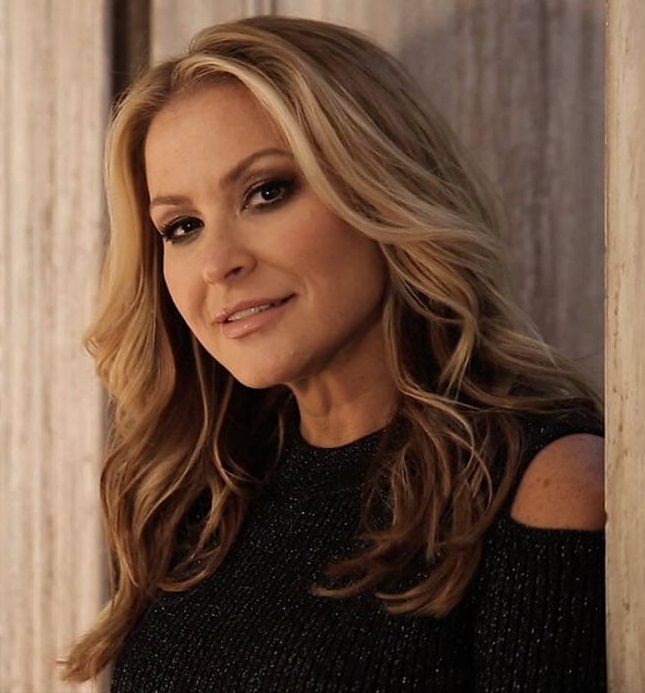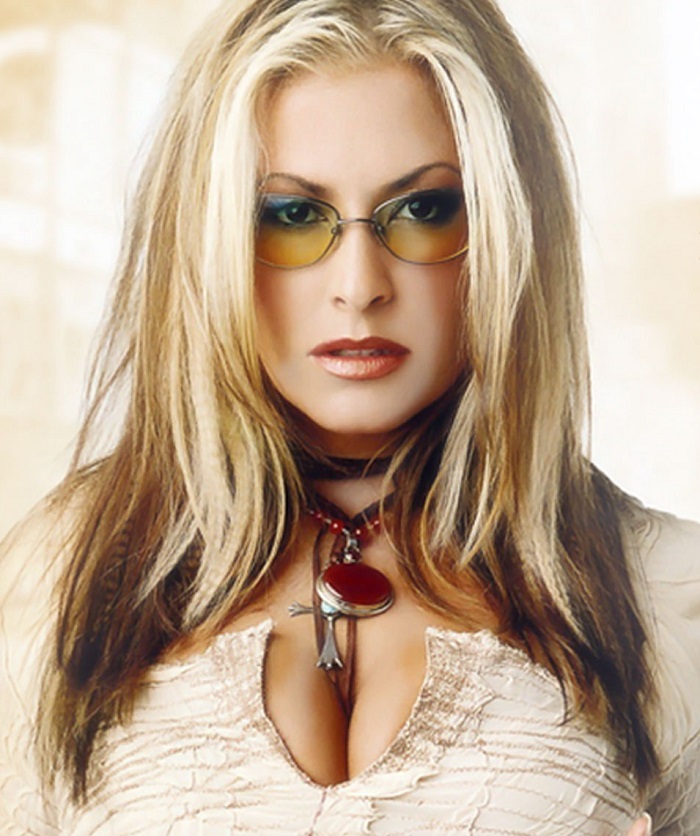
Me: Okay


Me: Okay
I’ve always been a huge fan of Robert Schumann’s music. I know all about his life story — the word “tragedy” comes to mind, and you can read all about it here — but while that knowledge provides some background, it doesn’t really matter because the music is beautiful beyond words. In one of those extraordinary little coincidences which occasionally drive me crazy, when I discovered the linked article I just happened to be listening to Schubert’s Schumann’s First Symphony (“Spring”) in B-flat major, the second movement of which has one of the most most haunting melodies ever written (just after the 15.30-minute mark). That the melody happens during a piece which celebrates the coming of the spring — traditionally a “happy” theme — is just one of the joys of listening to Schumann.
As for the “other” Schumann (his wife, virtuoso pianist Clara Wieck), the DM review of Judith Schernaik’s biography of Schumann pays eloquent praise to this extraordinary woman. (The book itself has gone onto my Christmas list.)
Anyway, if you want to enrich your life for a couple of hours on a chilly winter’s day or evening, you could do a LOT worse than listen to all four of Schumann’s symphonies, in order. I’ve selected the performances of the Staatskapelle Dresden, conducted by the incomparable Wolfgang Sawallisch.
Then, if you feel the need for more Schumann (and well you might), help yourself to a few of his Etudes…
No need to thank me; it’s all part of the service.
Let me see if I’ve got this straight: you’re reporting on an industry which is peopled top-to-bottom with lowlife scum and where the amoral depravity of the performers is matched only by the greed, avarice and venality of their managers; and when you discover that the place was basically Sodom & Gomorrah squared, you clutch your pearls and reach for the smelling salts?
Porn, sex toys, cocaine, a Rolodex of groupies and boasts about manhood size – the sordid truth about life inside Atlantic Records, the label behind Aretha and the Rolling Stones
This is like finding condoms in Bill Clinton’s wallet: not news. And lest we forget: it’s not like journalism is much different, morality-wise. What a bunch of tools.
As for the [whistle] blower: she lived in a world of sex, drugs and rock ‘n roll for year after year, but didn’t quit. Then she jumped a few musicians and wondered why she was treated like a spare piece of ass in the office.
Sympathy have I none.
In yesterday’s post (Part 1) I looked at the trend in modern music covered by this article. Today I want to talk about the last couple paragraphs of said piece, which really deserve their own discussion. Why? First, the text:
“Music is at its core a social activity. People get inspired to play because they listen to their favorite artists or see them at a live venue. But that experience isn’t translated when you take music lessons. It’s usually a very solitary, one-on-one experience with one teacher and the students aren’t necessarily learning to play the songs they want to learn.”
…
“We teach students of all ages the same music theory they’d learn anywhere else, but you learn to use that theory with a band [emphasis added]. Students have group rehearsals where they can practice with a band every week. And we also have our version of a recital, which is really a rock show at a live venue. We put on more than 3,000 shows a year across the world.”
I cannot stress how good an idea this is, and here’s why.
It is a truism of education that unless there is relevance, fear or self-interest (or all three) involved, education or training will be a waste of time, i.e. no learning will be retained. (“Retained learning” being defined as being taught something, and being able to repeat the input a year later with more or less 90% facility.) This learning will be doubly successful if it is practical, meaningful and requires frequent repetition.
So here’s why the above approach is so successful.
1.) Pupils are not just learning musical theory (which I can attest is deadly boring), but are immediately required to put it into practice by playing with a group — i.e. it has relevance because the band’s performance will suffer if the pupil under-performs, and thus the band will rehearse over and over until they get it right (which provides the discipline to practice, as opposed to leaving practice to self-discipline — not an easy thing to maintain for months or years). Thus: application and repetition.
2.) Pupils get to play either exactly what they want or a close facsimile thereof by making a group compromise. Thus: relevance for the skills they’re acquiring.
3.) Finally, the audience’s applause provides the reward (i.e. self-interest) for the pupil.
I can tell you from my own experience that when our band really enjoyed a song — both the learning and the playing — we would play it for months or even years until we either forgot about it or got sick of playing it. On one occasion, after an absence of five years from the playlist, we got a request for Radar Love. As it happened, one of us had it on tape, so we listened to it during a break, then went back onstage and played it as though we’d done it the night before. Retained learning.
So I am totally unsurprised at the success of the School Of Rock, if this is how they’re teaching music. If I were a great deal younger, I’d enroll in a heartbeat.
As for the main thrust of the article — that Guitar Center is in financial kaka — I’m not worried, certainly not as far as guitars are concerned. It’s one of the few items remaining where a buyer absolutely has to touch the thing and test it before buying it, so GC should be able to weather the storm, even if in truncated fashion… I hope.
Via Insty comes this article which, in talking about the financial woes of the Guitar Center retail chain, exposes two deeper issues. Here’s the first:
Guitars don’t figure as heavily into chart-topping music as they once did, according to [Guitar Center boss] Gruhn. He ought to know. Over the years, his customers have included everyone from Paul McCartney, George Harrison and Eric Clapton to Neil Young, Vince Gill and Billy Gibbons. Those artists have left indelible imprints on the music landscape, all the way from Clapton’s burning solo on “Crossroads” to Harrison’s signature guitar part on “Daytripper.”
But these days? Well, things aren’t as guitar-oriented.
“Baby boomers are the best customers I’ve ever had. They’ve driven a lot of the guitar trends, but they are aging and many of them are downsizing their guitar collections,” Gruhn added. “This doesn’t mean that guitar sales are dying, but instrument sales in general are under stress.”
And from another guy in the business:
“Rock is almost dead,” he said. “It’s almost nonexistent. And with guitar there’s no almost one to look up to anymore – no one to get you to want to learn. I have three or four guitar students who are about 12 to 14 years old, and I told one of them she should find someone in her class to play guitar with. She said, ‘No one else plays the guitar, and people think I’m weird because I do.’ ”
As a one-time rock musician, I note this trend with sorrow, of course. As much as I detest the modern obsession with 1,000-watt amplifiers in cars, it does allow me to note that I seldom if ever hear loud rock music emanating from cars these days — in fact, now that I think of it, I can’t remember when last I did — because the market in sub-woofer bass played by sub-moron drivers appears to be dominated by rap music and its adherents, Wiggers and and their Black counterparts. (And this in our upscale neighborhoods in north Texas. South Chicago must be just one large cacophony of thumping drums.)
I suppose that the trend away from rock music (and its instruments) is just one of those things — just as in classical music, harpsichord music almost disappeared when the pianoforte became more popular in the nineteenth century. Of course, I think this sucks, but then again if it means fewer hair bands then it’s not altogether a Bad Thing.
What I hate is what the trend means: that popular taste is devolving towards the primitive — but then again, I suppose that classical music aficionados said the same thing when jazz and later rock music began to supplant classical music among young people. One could say that the classical folks had a point: Buddy Holly wasn’t exactly Beethoven; then again, in today’s world Heavy Z (or whoever) isn’t exactly Freddy Mercury. But on his worst day, Buddy Holly could write better music than the most accomplished rapper, who has to rely on plagiarism (a.k.a. “sampling”) to provide some kind of musical overlay to a soul-crushing, over-amplified rhythm section. Don’t even get me started on the differences between Queen’s Bohemian Rhapsody and G-Eazy & Halsey’s Him & I (errrr Him & Me or He & I, surely?).
Of course, another manifestation of the move away from classical- to rock music was that guitar pupils began to outnumber piano pupils. After all, the guitar is an easier instrument to play than the piano, just as manipulating a turntable and drum machine is easier than playing a guitar (as the article correctly notes). I mean, when Paris Hilton can be known as a good DJ… those whirring sounds you hear are Stevie Ray Vaughan and John Bonham spinning in their basements.
One could get all upset about how this is just another sign of the Dumbing Down Of Today’s Yoof, but I think this is more a factor of how music has traditionally been taught and learned — which brings me to the second issue raised by the article.
In Part 2 tomorrow, I’ll talk about that. But just to help people know what I’m talking about, here’s a guitarist:

Back in the late 1990s and early 2000s, all sorts of music passed me by. I guess I was too busy with other stuff, and apart from new songs by old favorites (Clapton, Santana etc.), I was oblivious. Ordinarily, the kids’ music (my kids, that is) would have kept me informed, so to speak, but as I recall, they were listening to music which didn’t touch me — Limp Bizkit, Matchbox 20, Weezer, Shakira and all the teen-pop stuff — and I won’t even go into “club” music.
Well, maybe I should have listened to club music a little, because I completely missed someone called Anastacia — and that’s a Bad Thing.
Whoa. Talk about a seductive, and wonderful, mezzo-soprano: I’m Outta Love and Left Outside Alone (both of which I only encountered for the first time this past week) are astonishing. And as for Sick And Tired… phew.
Okay, let me get the obvious out of the way. The musical format of Anastacia’s music still leaves me untouched — in fact, I think it sucks — but good grief… that voice. It reminds me of a slightly edgier Tina Turner — and how does one get edgier than Tina?
Nor was she an overnight sensation, either: she’d really paid her dues.
Of course, it doesn’t hurt that Ms. Anastacia was as sexy as hell, too, not to mention gorgeous.


Of course, those were earlier pics of her, taken in her 30s. It’s been well over a decade since she “arrived” — she should have been discovered nearly ten years before then — and age has taken its toll on her, somewhat (not to mention Crohn’s Disease and breast cancer); but hell, even an older and plumper Anastacia can still turn heads, at age 50:



…and if anything, like a fine Scotch single malt her voice has got better with age. My only quibble is her music, which still sucks. I wish she’d become a torch singer, taking on the old jazz nightclub classics. She would be sensational.
And damn, I wish she hadn’t lost the glasses.
